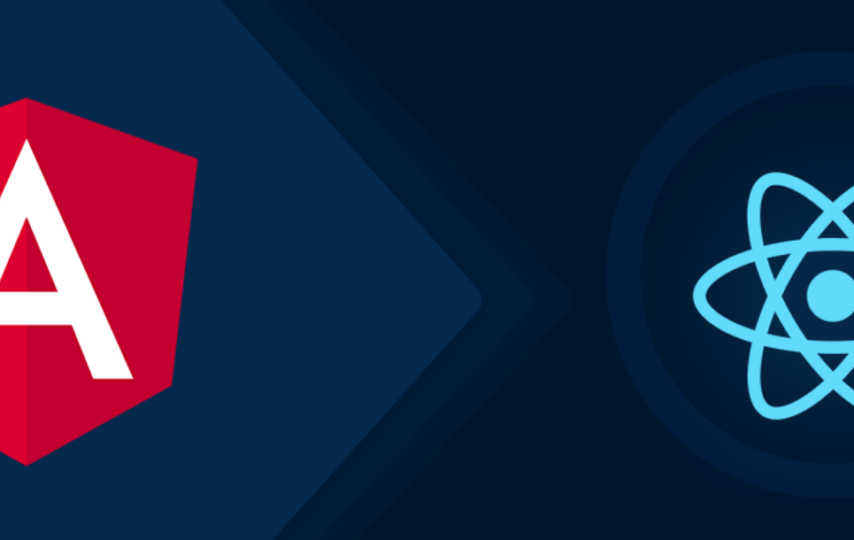Devstree stands out as a leading provider of React.js development services, specializing in creating scalable applications by utilizing advanced frameworks and optimal technology stacks. If you are uncertain about the suitable technologies for your project, our skilled development experts are prepared to initiate a discussion to customize solutions based on the unique dimensions of your project.
What is Angular?
Angular is a comprehensive development platform and application-design framework built on TypeScript, featuring a component-based architecture. With integrated libraries and key features such as two-way data binding, dependency injection, virtual scrolling, and the Angular CLI, it significantly expedites front-end development processes. Supported by a strong community, Angular represents a continuous evolution from its predecessor, AngularJS.
Benefits of Angular include:
- Robust encapsulation and an intuitive application structure
- Facilitation of clean code development
- Simplified processes for building, maintaining, testing, and updating
- Inclusion of built-in features like RxJS and Angular CLI
- Native support for HTTP, AJAX, and Observables
- Efficient rendering of server-side content
- Support for views that do not rely on browser-side rendering
What is React?
React, an open-source JavaScript library, is designed for front-end development focusing on constructing UI components. Its architecture, based on components and declarative views, simplifies the development of interactive and intricate user interfaces. Led by Facebook’s React team, React distinguishes itself through features such as declarative views, the advantage of JSX, virtual DOM, and one-way data binding. In fact, it is a favorite technology of Celadonsoft.
Benefits of React include:
- Creation of reusable and more predictable code
- Simplified debugging through declarative views
- Accelerated development time
- Improved developer productivity
- Smooth migration between different versions
- Capability for mobile app development through React Native
- Swift updates with support on both server-side and front-end
- Seamless integration with third-party libraries
In-depth Comparison: Angular vs React
Popularity
React enjoys higher GitHub stars and ranked higher in a 2022 Statista survey, indicating its greater popularity.
Performance
Both frameworks excel in performance. Angular emphasizes optimized coding practices, while React features a virtual DOM for faster rendering and component reusability.
Data Binding
Angular employs two-way data binding, whereas React uses one-way data binding with unidirectional data flow.
Code Quality and Maintainability
Angular utilizes tools like AngularCLI and emphasizes strong encapsulation, while React focuses on modern JavaScript and maintains code quality through Linters.
Server-Side Rendering
Angular excels in reducing client-server traffic, while React provides SEO-friendly server-side rendering.
Testing
Angular supports unit testing with features like dependency injection, while React ensures predictability in tests through mocking functions and continuous test execution.
Optimizing Bundle Size
Angular employs Ahead-of-Time (AOT) compilation for faster rendering, while React emphasizes code-splitting and compression to optimize bundle size.
Learning Curve
Angular has a steeper learning curve, suited for solving complex problems in large-scale applications. React offers a smaller learning curve, making it ideal for quick development.
State Management
Angular provides a built-in state management system, making it suitable for applications with complex state requirements. React, on the other hand, relies on external libraries like Redux for state management, offering flexibility and scalability.
Tooling
Angular comes with a comprehensive set of tools, including Angular CLI, which simplifies tasks like project scaffolding, testing, and deployment. React, being a library rather than a full-fledged framework, allows developers to choose tools that align with their preferences and project requirements.
Community and Ecosystem
React boasts a large and active community, leading to a vast ecosystem of third-party libraries and components. Angular’s community is also robust, with extensive documentation and support. The choice may come down to the specific libraries and tools available in each ecosystem.
When to Choose Angular or React
Angular:
- Optimal for designing, maintaining, and scaling large and complex applications
- Ideal for building feature-rich elements and customizations
- Suitable for developing enterprise-scale and mid-level projects
- A standalone solution for quickly creating data-driven web applications
React:
- Best suited for handling the view layer of the application
- Excellent for building reusable UI components
- Ideal for developing social networking apps, data visualization tools, retail, and e-commerce apps
- Prioritizes ease of development and a quick learning curve
In Conclusion:
Both Angular and React are proficient in crafting modern applications. The decision between them depends on project requirements, preferred programming paradigms, and team expertise. Angular is well-suited for complex, data-driven applications, while React is ideal for projects emphasizing ease of development and component reusability. Ultimately, the right choice relies on aligning the framework with your project’s specific needs and your development team’s skill set.



